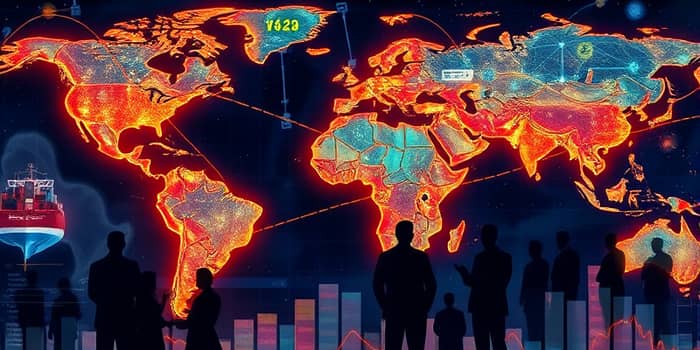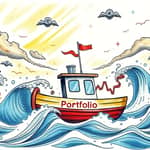
From boardrooms in New York to factories in Shanghai, the latest trade negotiations echo across markets worldwide.
In June 2025, the world paused as the United States and China announced a provisional trade framework that many described as landmark. Official statements highlighted a new era of engagement, though underneath the optimism lay deep-seated tensions around technology transfers and national security. The centerpiece of the announcement was a bold commitment to impose a 55% tariff on Chinese goods, a significant uptick from the previous 30 percent level.
Following this announcement, markets saw a spike in volatility. Early equity gains were quickly tempered by concerns over other unresolved barriers, particularly restrictions on high-tech American exports. Meanwhile, Beijing maintained its retaliatory levy at a steady 10 percent on US imports, signaling a cautious but firm stance.
Just a month earlier, the UK and the US had unveiled a deal projected to unlock $5 billion in new exports for US farmers. The pact promises to streamline customs and procurement processes, reduce non-tariff obstacles, and set rigorous standards on environmental and labor protections.
On a regional level, ASEAN’s June 2025 announcement of its 2026–2030 economic blueprint underscored the bloc’s ambition to become the fourth-largest global economy by 2045. The planned New ASEAN Trade in Goods Agreement aims to harmonize regulations, boost infrastructure, and foster deeper financial integration.
Financial news of these trade deals wield outsized influence on markets. Even tentative progress or rumors of deadlock can trigger swings in asset prices and bond yields. Analysts often attribute nearly half of projected GDP impacts to negative sentiment and policy uncertainty rather than direct tariff costs.
For example, when tariffs on Chinese goods peaked at an unprecedented 143.45% peak tariffs, global markets reeled, with manufacturing stocks plunging and emerging market currencies weakening. Conversely, just the rumor of a US-UK breakthrough propelled agricultural futures upward, benefiting farmers in the American Midwest.
Major institutions, including the IMF, have warned of a potential drop of up to 1 percent in US GDP under a universal 10% tariff scenario, with global GDP slipping by 0.5 percent by 2026. Such estimates underscore how headlines alone can shape economic forecasts and risk assessments.
As trade headlines dominate the front pages, companies are forced to adapt their strategies in real time. Supply chain managers monitor policy announcements around the clock, ready to shift procurement away from vulnerable regions.
For instance, a mid-sized electronics manufacturer in Vietnam restructured its logistics network to avoid anticipated Chinese duties. By partnering with suppliers in Mexico and Eastern Europe, the company mitigated the risk of sudden tariff hikes.
Similarly, agricultural exporters in the US have turned to futures markets and options contracts to lock in prices before announcements on ethanol and beef shipments. These moves illustrate how businesses integrate financial news into operational decisions, turning uncertainty into opportunity through agility and foresight.
Understanding the broader landscape of tariff regimes is crucial for assessing risk. Average MFN (Most Favored Nation) rates offer a snapshot of each country’s protective tendencies.
Beyond these averages, product-specific rates can vary dramatically. Passenger vehicles, for instance, face duties of 2.5 percent in the US, 10 percent in the EU, 15 percent in China, and a staggering 70 percent in India. Meanwhile, network equipment often enters tariff-free in the US but is subject to 10 percent in markets like India.
Rice and ethanol tariffs also highlight strategic policy choices. While the US maintains modest duties on rice (2.7 percent) and ethanol (2.5 percent), other nations such as India and Indonesia impose barriers above 30 percent, reflecting domestic import sensitivities.
Financial news does not merely report policy; it influences it. Policymakers watch markets for signals on risk tolerance, while investors monitor legislative debates for hints of treaty breakthroughs. This creates a feedback loop where headlines, market movements, and policy announcements feed off each other.
Trade disputes often escalate through legal avenues, with WTO challenges and domestic court rulings prolonging uncertainty. Each delay or reversal can reignite volatility, testing corporate risk management and government resolve in equal measure.
Yet within this cycle lies opportunity. Businesses that stay informed, maintain flexible supply chains, and use hedging tools can thrive even in turbulent times. Investors who parse beyond the headlines to underlying data can identify value when markets overreact.
Ultimately, the narrative of global trade hinges on both numbers and nuance. By understanding the interplay of tariffs, deals, and sentiment, stakeholders can navigate challenges with confidence and foresight.
Whether you are an enterprise leader, an investor, or a policymaker, the key to thriving lies in staying ahead of the curve. Embrace the flux of financial news, adapt your strategies with agility, and you can turn the whirlwind of trade headlines into a runway for growth.
References













